Apps
Life360 App: Complete In-Depth Review 2025
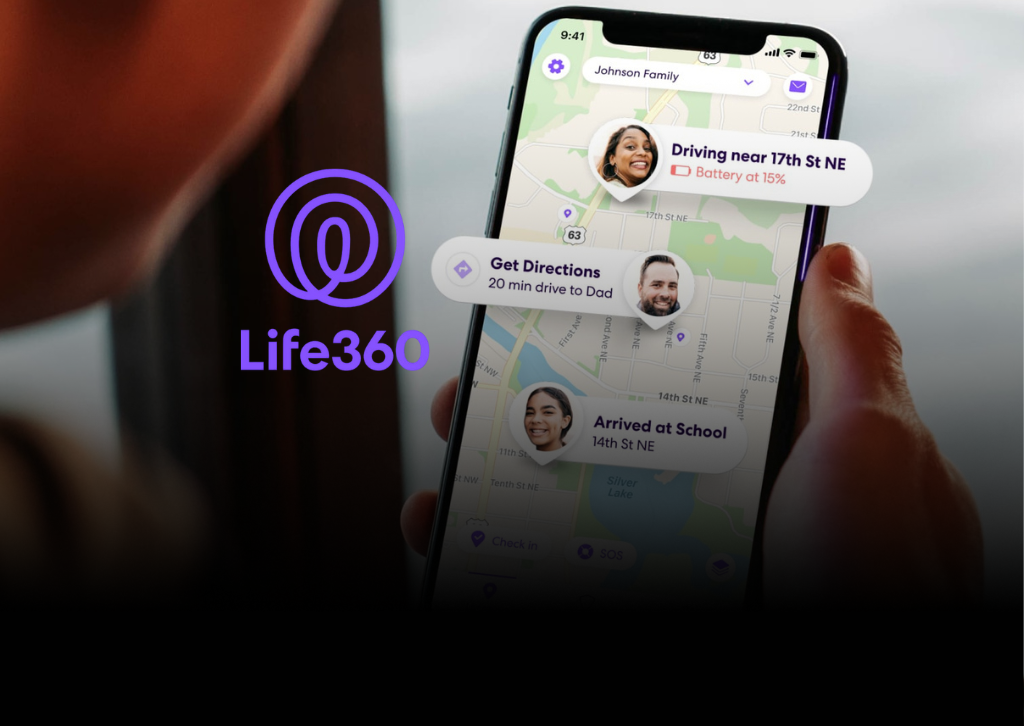
Life360 App
Life360 has become synonymous with family tracking and safety, boasting over 66 million users worldwide. But behind its polished marketing as the “#1 family location sharing & safety app” lies a complex story of innovative features, serious privacy concerns, and ongoing controversies. This comprehensive review examines every aspect of Life360 to help you make an informed decision about whether this app belongs on your family’s devices.
What Is Life360?
Life360 is a family safety and location-tracking application that allows families to share real-time locations, monitor driving habits, and access emergency services. Founded as “Drunk Mode” in 2013 before rebranding, the app has evolved into a comprehensive family safety platform that goes far beyond simple location sharing.
The app creates private groups called “Circles” where family members can see each other’s locations, receive alerts when members arrive at designated places, monitor driving behavior, and access various safety features. While the core functionality focuses on location tracking, Life360 has expanded to include digital safety tools, emergency assistance, and even Bluetooth tracker integration through its acquisition of Tile.
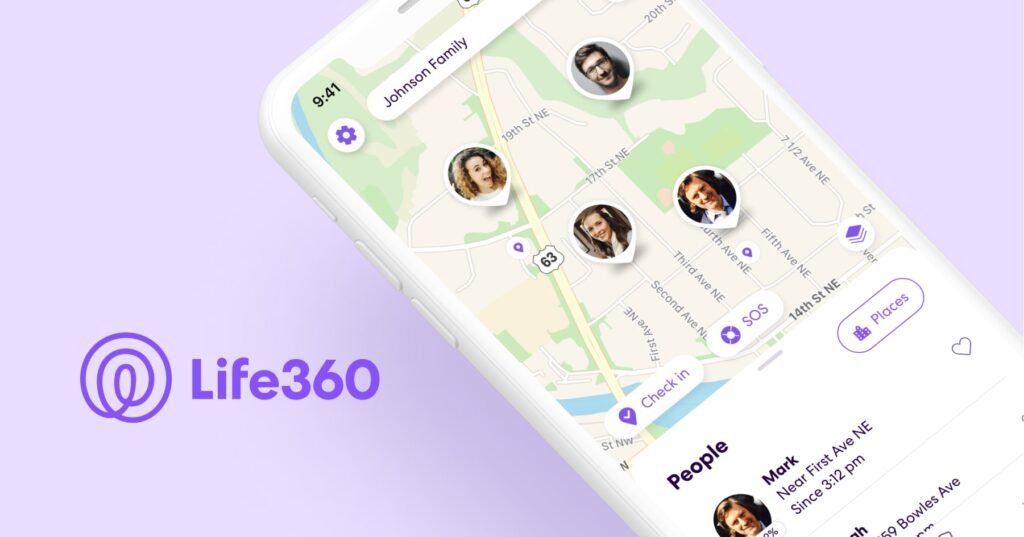
Core Features and Functionality
Real-Time Location Tracking
Life360’s primary feature displays family members’ real-time locations on an interactive map. The app tracks location in the background without the user needing to lift a finger, making it effortless for parents to monitor their children’s whereabouts. The tracking includes detailed movement history and precise GPS coordinates.
Place Alerts and Geofencing
Place alerts notify you when a member arrives at and leaves a designated place. This removes the need to constantly open the Life360 app to monitor a member’s location. Users can set up geofenced zones around important locations like home, school, or work, receiving automatic notifications when family members enter or leave these areas.
Driving Safety Features
Life360 stands out with its comprehensive driving monitoring capabilities. Life360 monitors the driving behaviors of circle members by using drive detection technology and phone movements. The app tracks behaviors that put the lives of circle members at risk while on the road. The system provides detailed driving reports including top speed, miles logged, routes taken, and driving safety scores.
Crash Detection and Emergency Response
The app includes automatic crash detection technology that can identify potential accidents and alert emergency contacts. Crash Detection with emergency dispatch and live agent support is available on premium plans, providing an additional layer of safety for drivers.
SOS and Emergency Features
SOS Alerts: Send silent alerts with your precise location to friends, family members, emergency contacts, and responders. The emergency features have been recently improved to make alerts easier to trigger or cancel, even in stressful situations.
Digital Safety Tools
Beyond physical location tracking, Life360 offers digital security features. The app can actively scour the dark web for data associated with your email address and alert you when it finds a hit, helping protect against identity theft and data breaches.
Bubble Feature for Privacy
Responding to privacy concerns, Life360 recently added the Bubble feature, which adds a little bit of privacy to location tracking without sacrificing safety. Bubble temporarily shows your general location without giving away the exact address.
Device Compatibility and Requirements
iPhone Compatibility
To use Life360, your device must meet the following system requirements: iOS (iPhone) running iOS 17.4 or newer. The App Store listing shows compatibility with iPhone Requires iOS 17.2 or later, though official support documentation indicates iOS 17.4 as the minimum requirement.
Android Compatibility
Android devices running Android 10 and newer are supported. Previous reviews mentioned The Life360 app for Android is compatible with Android 9 and up, but current requirements have been updated to Android 10.
Hardware Requirements
Devices must have GPS, accelerometer, gravity sensor, and gyroscope to fully utilize Life360’s features, particularly crash detection capabilities.
Unsupported Devices
Life360 explicitly does not support:
- Desktop or laptop computers
- iPads or other tablet devices
- Devices with US restrictions that limit access to Google Services (i.e., Huawei, Honor)
- Apple CarPlay, Android Auto, Smartwatches or Apple Watch (though notifications may appear)
Traditional Flip Phones
Unfortunately, Life 360 is not compatible with flip phones as they do not come with GPS capabilities. However, when it comes to flip smartphones, such as Samsung Galaxy Z Flip 5 or Motorola Razr Plus, they do support location tracking and meet all the hardware requirements.
Who Life360 Is For
Ideal Users
Parents with Teen Drivers Life360 excels for parents wanting to monitor new drivers. I downloaded life 360 when my teen started driving. It was great to be able to have visibility of where she is going with her new found freedom. I quickly learned about all the great features like the details of each drive she as taking. The comprehensive driving reports provide peace of mind and opportunities for teaching safe driving habits.
Families with Young Children I also have a 10 year old boy who has started walking around the neighborhood to meet up and play with friends. With Life360 I can see where he is and if he is stationary or on move around the neighborhood. The app works well for monitoring children’s activities and ensuring they arrive safely at destinations.
Safety-Conscious Families Families prioritizing safety and emergency preparedness will appreciate the comprehensive safety features, including crash detection, SOS alerts, and emergency assistance services.
Tech-Comfortable Users Life360 is easy to set up and use. Every step — from creating circles and assigning roles, to setting up geofences and adding emergency contacts — was easy to complete. The app works best for families comfortable with technology and smartphone usage.
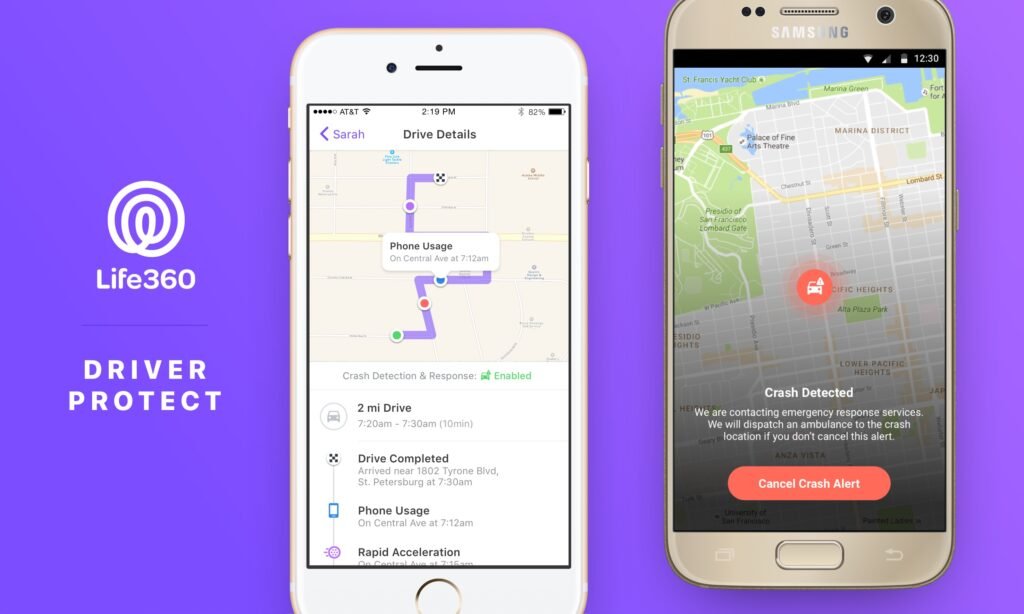
Who Might Not Like Life360
Privacy-Conscious Users Given the documented privacy concerns and data selling controversies, users who prioritize data privacy should consider alternatives.
Teens and Young Adults In mid-2020, teens, displeased at the privacy invasion of an app that allowed their parents to minutely track their movements, took to TikTok to encourage their peers to bomb the app with negative reviews. Many teenagers view Life360 as overly invasive and a violation of their privacy.
Users Seeking Stealth Monitoring One issue we encountered is that if you want to track someone’s location, they must install the app on their phone and accept the invitation. While installing the app makes sense, the app doesn’t work in stealth mode. Life360 requires all tracked individuals to actively participate.
Budget-Conscious Users While a free version exists, Life360 is missing many industry-standard parental control features, like web and app filtering, screen time management tools, and scheduling tools, among others. This is a pretty big letdown considering its price.
Pricing Plans and Value
Free Plan
The Life360 app free plan offers 2 days of location history, and you can add two locations for geofencing. It includes basic options like location tracking, location ETA, family driving summary, crash detection, and SOS alerts.
Silver Plan ($7.99/month)
Life360 Silver – Simplify your safety with features like: 2 Places with unlimited Alerts, 2 days of Location History, Crash Detection, Family Driving Summary, Data Breach Alerts, SOS Help Alerts During Emergencies.
Gold Plan ($14.99/month)
Life360 Gold* – Keep your family secure on the go with all the features of Life360 Silver, plus: 30 days of Location History, Unlimited Place Alerts, Individual Driver Reports, Crash Detection with emergency dispatch and live agent support, 24/7 Roadside Assistance, $250 in Stolen Phone Protection, ID Theft Protection and Data Breach Alerts, $25,000 in Stolen Fund Reimbursement.
Platinum Plan ($249.99/year)
Life360 Platinum* – Prepare for anything, anywhere, with all the features of Life360 Gold, plus: $1 million in Stolen Fund Reimbursement, 50 miles of Free towing, $500 in Stolen Phone Protection, Travel Support with Disaster Assistance, Medical Support.
Value Assessment
Overall, I think Life360 is a little pricey for what it offers compared to the best parental control apps because it’s missing many essential parental control app features. The pricing becomes more justifiable when considering the unique safety features like crash detection and emergency services that aren’t typically found in standard parental control apps.
Privacy Concerns and Data Practices
The Data Selling Controversy
Life360 has faced significant scrutiny over its data practices. The Markup has learned, however, that the app is selling data on kids’ and families’ whereabouts to approximately a dozen data brokers who have sold data to virtually anyone who wants to buy it.
Financial Impact of Data Sales
In 2016, the company made $693,000 from selling data it collected. In 2020, the company made at least $16 million—nearly 20 percent of its revenue that year—from selling location data. This reveals the substantial financial incentive behind the data collection practices.
Legal Action and Response
A proposed class-action lawsuit has been filed against the maker of family-tracking app Life360, alleging it sold users’ location data without permission. However, The class action lawsuit against Life360 detailed on this page was voluntarily dismissed by the plaintiff on November 3, 2023.
Company Response and Changes
Following the investigations, Life360 announced it would stop selling precise location data to the dozen or so data brokers it had been working with a month after The Markup published its investigation. The company now claims to sell only aggregated data to Placer.AI and continues selling precise location data exclusively to Arity, an Allstate company.
Current Privacy Practices
In addition to disclosures of certain personal information for Life360’s advertising purposes described above, we also disclose certain information, including precise geolocation data, movement data, and other information, about your use of our Services to select business partners for their own uses. Users can opt out through app privacy settings.
Pros and Cons
Pros
Comprehensive Safety Features Life360 offers an extensive suite of safety tools including crash detection, emergency dispatch, roadside assistance, and SOS alerts that go beyond simple location tracking.
Easy Setup and Use Life360 is easy to set up and use. Every step — from creating circles and assigning roles, to setting up geofences and adding emergency contacts — was easy to complete.
Detailed Driving Monitoring The app provides comprehensive driving reports with speed, routes, and safety scores, making it valuable for monitoring teen drivers.
Free Version Available The Life360 app free version actually does a lot, offering basic location tracking and safety features without requiring a paid subscription.
Large User Base and Reliability With over 66 million users, Life360 has proven scalability and generally reliable service.
Emergency Services Integration Premium plans include actual emergency dispatch services and live agent support, not just notifications.
Cons
Significant Privacy Concerns The documented history of selling user location data to third parties raises serious privacy and trust issues.
Limited Parental Control Features Life360 is missing many industry-standard parental control features, like web and app filtering, screen time management tools, and scheduling tools.
Battery Drain Issues The app itself is good… as long as you are able to keep your phone plugged in all day. it works by pinging GPS servers so obviously it’s going to consume a lot of battery.
Requires Active Participation All family members must install the app and accept invitations, making it unsuitable for covert monitoring.
Delayed Notifications It’s not the fastest with updating, it could say someone is in one location but they could be actively driving. Notifications of completion after drive are delayed severely.
Subscription Costs While a free version exists, the most useful features require paid subscriptions that can be expensive for families.
Trust and Relationship Issues Constant tracking can create tension and trust issues within families, particularly with teenagers.
User Experience and Interface
Design and Navigation
The app’s design is navigable, and you can find explanations for each feature; however, the interface is not as clean as one would want. There are too many features that could have been adjusted based on usage. The interface can feel cluttered with numerous features and frequent premium upgrade prompts.
Ease of Use
The best part about using Life360 is that kids and non-tech-savvy users don’t really have to do a lot on their end for the app to work. As long as Life360 is properly configured, it tracks location in the background.
Performance Issues
Users report various performance issues including slow location updates, delayed notifications, and significant battery consumption. My overall experience with Life360 was good I took it off my phone once or twice but we always seem to need it back, indicating a love-hate relationship many users experience.
Alternatives to Consider
For families concerned about Life360’s privacy practices or seeking different features, several alternatives exist:
Free Alternatives:
- Apple Find My (iOS users)
- Google Family Link
- Google Maps location sharing
- Glympse
Paid Alternatives:
- Qustodio (comprehensive parental controls)
- Norton Family
- mSpy (stealth monitoring)
- FamiSafe
Bottom Line Recommendation
Life360 occupies a unique position in the family safety app market with its comprehensive suite of safety features, emergency services, and detailed driving monitoring. For families prioritizing safety and emergency preparedness, the app offers valuable features that few competitors match.
However, the privacy concerns cannot be ignored. The documented history of selling user location data to third parties represents a significant breach of trust for an app marketed as a family safety service. While the company has scaled back these practices, the damage to credibility remains.
Life360 is best for:
- Families with teen drivers who want detailed driving monitoring
- Safety-conscious families comfortable with location sharing
- Users who prioritize comprehensive emergency features
- Families willing to pay for premium safety services
Consider alternatives if:
- Privacy is your top concern
- You need comprehensive parental controls beyond location
- You want stealth monitoring capabilities
- You’re budget-conscious and want free solutions
Frequently Asked Questions
Q: Is Life360 really free? A: Yes, Life360 offers a completely free version with real-time location sharing, 2-day location history, place alerts, and basic safety features. However, the most advanced features require paid subscriptions.
Q: Can Life360 track someone without them knowing? A: No, Life360 requires all tracked individuals to install the app and accept invitations to join circles. It does not work in stealth mode.
Q: Does Life360 drain phone battery? A: Yes, Life360 is known to significantly impact battery life due to constant GPS tracking and background processing. Users report it can consume more battery than social media apps.
Q: Is Life360 safe and secure? A: While Life360 has implemented security measures, the company has a documented history of selling user location data to third parties. They’ve since scaled back these practices but privacy concerns remain.
Q: Can you turn off Life360 without parents knowing? A: If location services are disabled or the app is deleted, it will show the last known location and may alert other circle members. The app is designed to prevent secret disabling.
Q: What happens if my phone dies while using Life360? A: When your phone battery dies, Life360 will show your last known location before the device went offline. Premium plans include low battery alerts to warn circle members.
Q: Does Life360 work internationally? A: Life360 works in many countries but emergency services and some premium features may be limited outside the United States. Check their website for specific country availability.
Q: Can Life360 detect if I’m driving or just a passenger? A: Life360 uses motion sensors and GPS patterns to detect driving, but it cannot always distinguish between drivers and passengers. This can sometimes result in inaccurate driving reports for passengers.
Q: How accurate is Life360’s location tracking? A: Location accuracy depends on GPS signal strength, device quality, and environmental factors. While generally accurate, users report occasional delays and inaccuracies in location updates.
Q: Can I use Life360 on multiple devices? A: Each person needs their own device with the Life360 app installed. The app is designed for smartphones and doesn’t support tablets, computers, or smartwatches as primary devices.

All your app reviews are here in one place. The Tech Review.
Apps
Evernote v11: The Comeback Story Powered by AI
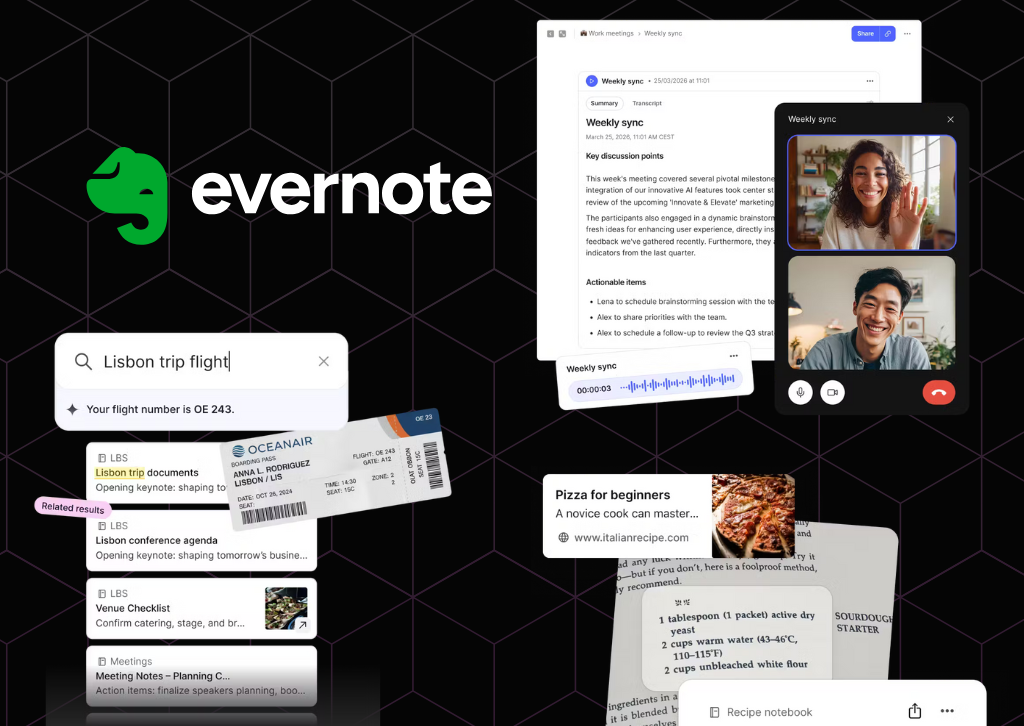
The note-taking pioneer reinvents itself with OpenAI partnership and long-awaited features
Evernote, the once-dominant note-taking app that seemed to fade into obscurity, is making a bold play for relevance with its most significant update in five years. Version 11, released today, represents a dramatic shift in strategy as the company goes all-in on artificial intelligence, partnering with OpenAI to transform how users interact with their notes.
The timing of this comeback attempt is notable for anyone who’s written off Evernote in recent years. The company has been quietly rebuilding since Milan-based developer Bending Spoons acquired the struggling app in 2022 and subsequently relocated operations to Europe after significant layoffs. Now, with over 200 improvements and a major version release, Evernote is ready to reclaim its place in the productivity conversation.
AI Assistant: ChatGPT Inside Your Notes
The centerpiece of version 11 is AI Assistant, developed in collaboration with OpenAI. This isn’t just another chatbot bolted onto an existing app—it’s a deeply integrated tool that fundamentally changes how users can work with their accumulated knowledge.
AI Assistant goes beyond simple search functionality. Users can ask questions about their notes in natural language, generate new content, and interact conversationally with their entire note library. During a demonstration, Evernote’s product lead Federico Simionato showed how AI Assistant could add specific details like flight numbers to travel notes, suggesting a future where the tool becomes a true digital assistant rather than just a search interface.
The implementation comes with important privacy safeguards. Users maintain granular control over which content AI Assistant can access, and Bending Spoons’ agreement with OpenAI explicitly prevents user data from being used to train models. Any information sent for processing is only retained for the duration needed to complete the request.
Interestingly, Bending Spoons is taking a more aggressive approach with AI Assistant than with previous AI features. The tool will be enabled by default for all paid users, a decision informed by earlier missteps. When the company released AI Search in 2023, they buried the activation deep in settings out of privacy concerns. Users found this approach too cumbersome, and with AI tools becoming mainstream, Evernote decided to make AI Assistant immediately accessible.
Semantic Search: A Decade in the Making
Perhaps even more significant than AI Assistant is the introduction of Semantic Search—a feature longtime Evernote users have requested for over a decade. Traditional keyword search requires users to remember exact words or phrases from their notes. Semantic Search understands context and meaning instead.
The practical implications are substantial. Type “Barcelona trip” into the search bar, and Evernote might surface notes about a journey to Girona, recognizing the geographical and contextual relationship even though Barcelona isn’t mentioned in the document. This contextual understanding transforms Evernote from a digital filing cabinet into something closer to a second brain that actually understands what you’re looking for.
According to Simionato, Semantic Search tops the list of most-requested features from the Evernote community. Its arrival in version 11 suggests Bending Spoons is listening to longtime users while simultaneously courting new ones with AI-powered capabilities.
Enhanced Transcription and Recording
Building on the AI Transcribe feature introduced in 2024, version 11 expands Evernote’s audio capabilities significantly. The app can now record and automatically transcribe both in-person meetings and online conversations, then generate summaries of what was discussed. The feature supports every language currently available in Evernote, making it useful for international teams and multilingual users.
Earlier this year, Evernote increased the file size limit for AI transcription to 100MB, accommodating hour-long meetings or lectures. The transcription engine uses advanced speech recognition designed to handle various accents and background noise, though optimal results still require relatively clear audio.
The Road Ahead
All new AI features will roll out first to desktop and web versions this month, with mobile support following later. Currently, these capabilities are exclusive to paid subscribers, though Bending Spoons plans to offer free users a trial period in the coming months.
There’s a caveat worth noting: price increases are on the horizon. Simionato acknowledged that the company will adjust pricing soon, partly because the gap between Personal and Professional tier offerings has narrowed considerably.
For Evernote, version 11 represents more than just a feature update—it’s an argument that the app deserves another look. Simionato’s hope is simple: that people will give Evernote a try and discover it’s no longer the slow, unreliable application many remember.
Whether this AI-powered transformation can truly resurrect Evernote’s fortunes remains to be seen. The productivity app landscape has grown crowded with formidable competitors like Notion, Obsidian, and Roam Research. But with OpenAI’s technology under the hood and long-requested features finally arriving, Evernote at least has a compelling story to tell.
The question now is whether anyone’s still listening.

TheTechReview.net is the best place for all your App reviews
Apps
What is Cloud Computing? A Beginner’s Guide

If you’ve ever checked your email on your phone, streamed a movie on Netflix, or stored photos online, congratulations—you’ve already used cloud computing! But what exactly is “the cloud,” and why does everyone keep talking about it?
Understanding the Cloud: It’s Simpler Than You Think
Despite its mysterious name, cloud computing is actually relatively straightforward. Think of it this way: instead of storing all your files, photos, and programs on your personal computer or phone, you store them on powerful computers located elsewhere—often in large data centers around the world. You access these files and programs through the Internet whenever you need them.
Imagine your home filing cabinet versus a safety deposit box at a bank. Your filing cabinet is like your computer’s hard drive—everything is right there at home, but you could lose everything if something happens to your house. A safety deposit box is like the cloud—your important documents are stored securely in a professional facility, and you can access them whenever you need to, from any bank branch.
Real-World Examples You Use Every Day
Cloud computing isn’t just for tech companies. Here are some services you might already be using:
Email Services: Gmail, Outlook, and Yahoo Mail store your emails on their servers, not on your device. Because they’re all stored in the cloud, you can check your email from any computer, tablet, or phone.
Storage Services: Google Drive, Dropbox, and iCloud let you save documents, photos, and videos online. Delete an image from your phone by accident? You can get it back if it’s backed up to iCloud or Google Photos.
Streaming Platforms: Netflix, Spotify, and YouTube don’t download entire movies or songs to your device. They stream content from their cloud servers, saving space on your devices.
Social Media: Facebook, Instagram, and TikTok store billions of photos and videos in the cloud, allowing you to access your posts from any device.
Office Software: Microsoft 365 and Google Workspace let you create documents, spreadsheets, and presentations online without installing software on your computer.
The Benefits: Why People Love the Cloud
Access Your Stuff Anywhere: Whether you’re at home, at work, or on vacation, you can access your files from any device with an internet connection. No more emailing files to yourself or carrying around USB drives.
Automatic Backups: Most cloud services automatically back up your data. If your phone falls in a pool or your laptop crashes, your photos, documents, and files are safe in the cloud.
Save Storage Space: Instead of filling up your device’s storage with thousands of photos and large files, you can store them in the cloud and free up space for the things you need right now.
Easy Sharing: Want to share vacation photos with family or collaborate on a work document? Cloud services make it simple to share files with others, even if they’re across the country.
Cost-Effective: Many cloud services offer free basic plans, and paid plans are often cheaper than buying and maintaining your own equipment. You only pay for what you use.
Automatic Updates: Cloud-based software updates itself automatically. No more annoying update notifications or worrying about whether you have the latest version.
How to Access the Cloud
Getting started with cloud computing is easier than you might think. Here’s how most people access it:
Through Your Web Browser: Simply visit a website like gmail.com or drive.google.com, log in, and you’re using the cloud. No special software required.
Mobile Apps: Download apps like Dropbox, Google Photos, or Microsoft OneDrive to your phone or tablet. These apps connect directly to your cloud storage.
Built-In Features: Your smartphone likely already uses cloud services. iPhones come with iCloud, and Android phones use Google’s cloud services. These often work automatically in the background.
Desktop Applications: Some cloud services offer programs you can install on your computer (like the Dropbox folder on your desktop) that make accessing your cloud files feel just like using folders on your computer.
To get started, simply create a free account with any major cloud service provider, and you’ll typically get several gigabytes of storage at no cost.
Frequently Asked Questions
Q. Is the cloud really just someone else’s computer?
A. Yes, essentially! “The cloud” is a network of powerful computers (called servers) housed in data centers. These computers are designed to store data and run programs that you can access over the internet.
Q. Is my data safe in the cloud?
A. Cloud providers invest heavily in security, often more than individuals can afford for personal devices. They use encryption, multiple backups, and professional security teams. However, you should still use strong passwords and enable two-factor authentication for additional protection.
Q. Do I need internet to access my cloud files?
A. Generally, yes. However, many cloud services allow you to download files or mark them as “available offline” so you can access them without an internet connection. Any changes you make will sync once you’re back online.
Q. What happens if the cloud company goes out of business?
A. Reputable cloud providers give you ways to download your data. It’s always a good idea to keep important files backed up in multiple places—following the “don’t put all your eggs in one basket” principle.
Q. How much does cloud storage cost?
A. Many services offer free plans with basic storage (often 5-15 GB). If you need more space, paid plans typically start around five to ten dollars per month for 100 GB to 1 TB of storage.
Q. Can I use multiple cloud services?
A. Absolutely! Many people use Google Drive for documents, iCloud for photos, and Dropbox for work files. You can mix and match based on your needs.
Q. Is the cloud environmentally friendly?
A. Large cloud providers often use their resources more efficiently than individuals running personal computers 24/7. Many are also investing in renewable energy for their data centers, making the cloud increasingly eco-friendly.
The Bottom Line: Cloud computing has revolutionized how we store information and use technology. It’s convenient, accessible, and increasingly affordable. Whether you’re backing up precious family photos or collaborating on a project with colleagues across the globe, the cloud makes modern digital life easier and more connected. And the best part? You’re probably already using it without even thinking about it

Apps
What is Vibe Coding? A New Era in Software Development

Vibe Coding
Coined by AI researcher Andrej Karpathy, vibe coding is an emerging software development practice that uses artificial intelligence (AI) to generate functional code from natural language prompts. Instead of meticulously writing code line-by-line, a developer’s primary role shifts to guiding an AI assistant to generate, refine, and debug an application through a conversational process. The core idea is to focus on the desired outcome and let the AI handle the rote tasks of writing the code itself.
Who is it for?
Vibe coding is not just for professional developers. It’s designed to make app building more accessible to those with limited programming experience, enabling even non-coders to create functional software. For professional developers, it acts as a powerful collaborator or “pair programmer,” accelerating development by automating boilerplate and routine coding tasks. This allows experienced developers to focus on higher-level system design, architecture, and code quality.
What can you do with it?
The applications of vibe coding are vast, especially for rapid ideation and prototyping. It’s well-suited for:
- Prototyping and MVPs (Minimum Viable Products): Quickly create a functional prototype to test an idea without spending a lot of time on manual coding.
- Side Projects: Build small, personal tools or applications for specific needs.
- Data Scripts and Automation: Automate repetitive tasks or create small data processing scripts.
- UI/UX Mockups: Generate a visually functional user interface based on a description.
- Learning and Experimentation: Use AI tools to learn new programming languages or frameworks by asking them to explain the code they generate.
How to learn how to do it?
Learning vibe coding is less about mastering syntax and more about mastering communication with AI. Here are some key steps and best practices:
- Start with the right tools. Popular choices include GitHub Copilot, ChatGPT, Google Gemini, and platforms like Replit and Cursor.
- Be specific and break down complex tasks. The “garbage in, garbage out” principle applies. Instead of asking the AI to “build a social media app,” start with a specific, manageable task, like “create a Python function that reads a CSV file.”
- Iterate and refine. The first output may not be perfect. The process is a continuous loop of describing, generating, testing, and refining the code. You guide the AI with feedback like, “That works, but add error handling for when the file is not found.”
- Always review and verify. Do not blindly trust the AI’s output. Review the code it generates to ensure accuracy, security, and quality. A developer’s ability to read and debug code becomes an even more critical skill.
Is there a future job for it
Vibe coding is not seen as a replacement for human developers, but rather as an amplifier. The future of jobs in this space is likely to involve a shift in roles:
- AI-First Developer: A developer who builds products primarily using modern AI-powered tools.
- Prompt Engineer: A specialist who designs clear and effective prompts to get the best possible output from AI systems.
- Oversight Lead: A professional who validates, debugs, and secures AI-generated codebases.
Vibe coding will likely continue to evolve and create new opportunities for those who adapt and learn to work effectively with AI tools.
Q&A
Q: Can a non-coder truly build a full application with vibe coding?
A: While vibe coding can enable a non-coder to create a functional prototype or a simple app, complex, production-level applications with robust features and security still require the expertise of a professional developer to review, fix, and maintain the codebase.
Q: Does vibe coding make learning traditional programming languages obsolete?
A: No. While vibe coding automates much of the manual coding, a fundamental understanding of programming concepts, data structures, and algorithms is still essential for guiding the AI, debugging, and ensuring the quality and security of the final product.
Q: What are the main downsides of vibe coding?
A: Vibe coding can lead to technical complexity, a lack of architectural structure, and code quality issues. Debugging can be challenging, as the code is dynamically generated. There are also potential security risks if the generated code is not properly vetted.

Want to know if that new app is worth the download? Our in-depth reviews have you covered. We’ve tested the latest software so you can make smarter decisions.
Explore our app and software reviews now to upgrade your digital life!
-

 Photography3 months ago
Photography3 months agoSony FE 16mm f/1.8 G Review: The Ultra-Wide Prime for the Modern Creator
-

 Computers3 months ago
Computers3 months agoAsus ProArt Display 6K PA32QCV Review: A Visual Feast for Professionals
-

 Tablets5 months ago
Tablets5 months agoClash of the Titans: 13″ iPad Pro M4 vs. Samsung Galaxy Tab S10 Ultra – Which Premium Tablet Reigns Supreme?
-

 Home Tech3 months ago
Home Tech3 months agoThe Guardian of Your Threshold: An In-Depth Review of the Google Nest Doorbell
-

 Computers4 months ago
Computers4 months agoASUS Zenbook Duo: A Pretty Awesome Dual-Screen Laptop
-

 Photography4 months ago
Photography4 months agoAdobe’s “Project Indigo” is the iPhone Camera App We’ve Been Waiting For, and It’s Awesome
-

 Photography3 months ago
Photography3 months agoDJI Osmo 360 go: The Next Generation of Immersive Storytelling?
-

 Health Tech3 months ago
Health Tech3 months agoLumen Metabolism Tracker: A Deep Dive into Your Metabolic Health
-

 Computers4 months ago
Computers4 months agoApple Mac Studio Review: A Desktop Powerhouse Redefined
-

 Home Tech3 months ago
Home Tech3 months agoRevolution R180 Connect Plus Smart Toaster: More Than Just Toast?
-

 Computers4 months ago
Computers4 months agoSamsung 15.6” Galaxy Book5 360 Copilot AI Laptop: A Deep Dive into the Future of Productivity
-

 Buying Guides4 months ago
Buying Guides4 months agoThe Ultimate Workout Soundtrack: The Best Wireless Headphones for Your Fitness Journey




